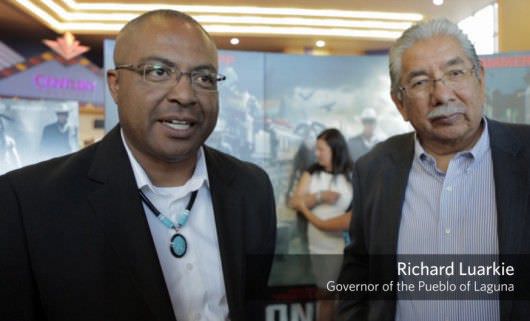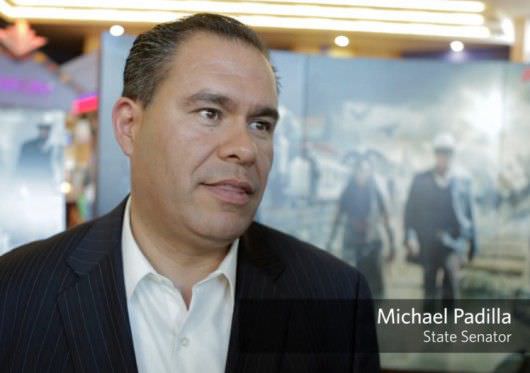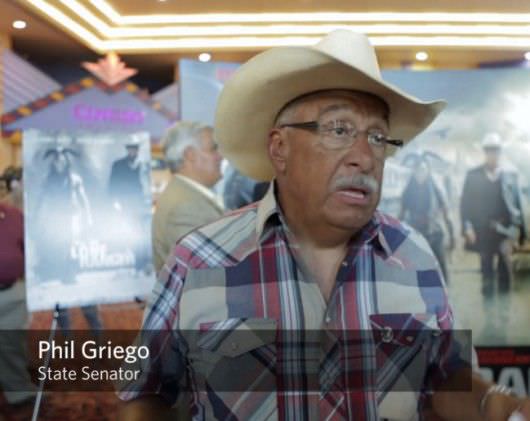The Lone Ranger Rounds Up Work, Buoys Businesses for New Mexico
When The Credits traveled to Albuquerque, New Mexico for the local premiere of The Lone Ranger, we did our best to capture on film the incredible positivity and excitement the movie brought to the people of the state. Talking with New Mexico’s politicians, Native American leaders and locals who worked on the film, it was clear The Lone Ranger meant more to them than job creation and revenue—it was proof that, once again, New Mexico is a state where major films are made.
When a film or TV production comes into a community, it can have a cascade effect on the local economy. As state senator Michael Padilla told us, The Lone Ranger brought approximately 2,000 jobs to the state during the life of its production. But the needs of a film of this scale also require the goods and services offered by local businesses in every town they film in.
A film like The Lone Ranger can almost mimic infrastructure projects. Construction workers, technicians, and skilled laborers of all stripes are required. Local businesses are required to keep these productions moving—launderers, caterers, electricians, hotels, motels, car rental agencies, and restaurants are just a few of the businesses that are thrive when a movie comes into town.
Ken Martinez, the speaker of the house of the state of New Mexico, says, “Guys that swing hammers for a living were building houses that were going up like crazy in the southwest. Then the economy goes down, housing starts to go down…and then the film moves in. They’re now employed building film sets, and they love it. Because you build them, take them down, and then build them again.”
Some of those hammers were swung in the town of Rio Puerco, 36 miles west of Duke City, where local workers turned the town into two crucial locations in the film—Colby and Promontory Summit (which is actually in Utah, where the Transcontinental Railroad was completed in 1869, and the scene of a major action set piece in the film).
How has New Mexico become a major state for film production? Legislators like state Senator Phil Griego have made it a priority to create the filmmaker-friendly tax incentives that bring productions into the state. Griego told us that by putting in the tax credits and incentives that help foster a strong film base, they’ve let the studios know that “New Mexico is open for business.”
Those tax incentives help lead to the creation of a solid crew base and a university and college system that provide students with the skills needed to work on a film set. The Lone Ranger was just the latest major production to sweep into the land of enchantment.
“The universities have developed programs, much like CNM (Central New Mexico Community College), and some of the other technical colleges, to provide a skilled work force for this type of industry,” Padilla says. “We’re meeting those needs, they’re coming, and it’s just demonstrated by what we’re seeing.”
There are elements, however, that are beyond the control of hard working men or women that bring film productions to New Mexico—the state’s natural elements.
Shooting in 16 locations across the state for seven months, one of the draws that bring productions like The Lone Ranger is New Mexico’s astonishing variety of geography. Verbinksi utilized the otherworldly rocky terrain of Plaza Blanca in Albiqui, the gorgeous environs of the Valles Caldera National Preserve, and the beautiful terrain on the Pueblo of Laguna, where the film was shot on the eastern end of the reservation.

Richard Luarkie, Governor of the Pueblo of Laguna, said that The Lone Ranger showcases the beauty of his reservation, and creates the potential for other tribes to benefit. “It brings a whole new opportunity for tribes, not only Laguna but many other tribes that have pristine land and a lot of area to be able to shoot more movies in the future.”
All of these elements, political, educational, economic and natural, have made New Mexico a hot spot for major films and television shows, from Breaking Bad to Marvel's The Avengers.
Along with well known film hubs California and New York, New Mexico is a part of a host of states like Utah, Georgia, Louisiana and North Carolina that have been working with the film industry to boost their economies by bringing in productions, opening up production studios, and creating film tax incentives to lure filmmakers and televisions productions to their states.
Thanks to production facilities like Albuquerque Studios, which has already housed Marvel's The Avengers, Book of Eli, and Terminator: Salvation, the state has proven itself capable of pulling off a film on any scale. Academy Award winning cinematographer Wally Pfister’s directorial debut, Transcendence, starring New Mexico’s favorite adopted son, Johnny Depp, and Morgan Freeman, will be the next huge production to come to New Mexico.





